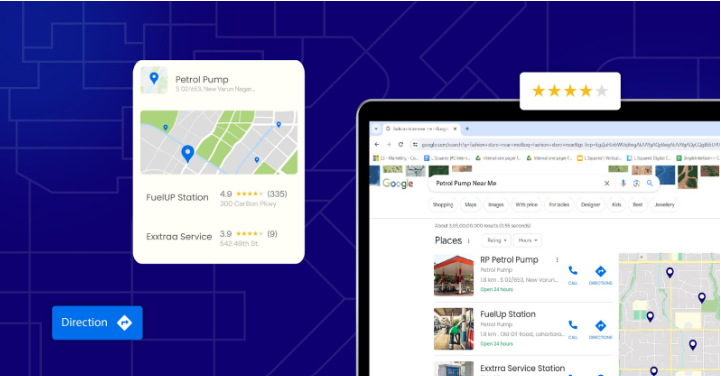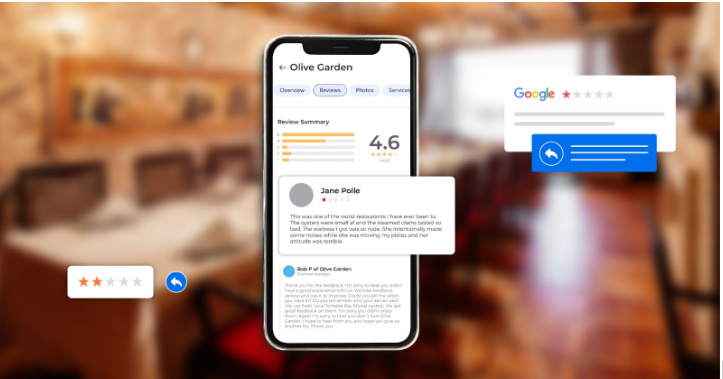Your Google Business Profile (GBP or Google My Business, GMB) isn’t just an online listing but an important tool for local visibility and customer engagement. One of the most crucial elements of your GMB is the category you choose.
Choosing a perfect GMB category defines how your potential customers find you, understand what your business offerings are, and decide if they want to engage with your business.
GMB categories can help shape your online identity and set the stage for your business to stand out in a crowded market. Understanding the GMB category selection is key for any business aiming to thrive online.
There are two main types of categories: Primary and Secondary.
Google offers nearly 4000 categories, but not every option fits every business. Researching industry-specific categories can help you identify the most relevant ones.
Understanding this can guide you in how to select the best GMB category that aligns with your business offerings.

Imagine you’re running a dealership specializing in electric vehicles (EVs). Choosing “Electric Vehicle Dealer” as your primary GMB category would give you a competitive edge in local search results.
This selection helps Google accurately match your business with customers specifically looking for EVs rather than just general automotive services.
Adding secondary categories like “Car Dealership” or “Electric Vehicle Charging Station” (if you offer those services) can further improve visibility, allowing your business to reach customers interested in EV-specific needs.
This approach highlights why selecting precise categories matters, each choice brings your business closer to potential customers looking for exactly what you offer.
Choosing the right GMB category is more than a technical step; it’s a critical decision that shapes how customers discover your business. According to Google, selecting the most accurate primary category is essential, as it helps the search algorithm better match your business with local search queries. Adding secondary categories where it’s relevant can further enhance visibility, especially for specific services, ensuring customers searching for what you offer can find you.
One of the key reasons for choosing the right Google My Business category is their direct influence on your presence in local search results. Businesses that correctly categorize themselves on Google improve their chances of appearing in Google’s local pack by up to 5 times compared to incorrectly categorized businesses.
The right GMB category for business visibility can differentiate your business from competitors by aligning closely with what your target audience is searching for, creating a unique selling proposition.
Businesses with accurate listings category enjoy significantly higher click-through rates. The increased CTR is crucial because it translates directly to higher engagement rates, leading to more inquiries and conversions. GMB category optimization tips suggest that regularly reviewing and adjusting the categories can maximize this effect.
SingleInterface’s reporting and analytics capabilities can help businesses monitor performance metrics, such as CTR, enabling them to adjust their strategies based on what categories drive the most traffic. By continuously optimizing category choices, businesses can enhance their online performance.
Choosing the right category establishes credibility and trust with your potential customers. When your business’ GMB profile accurately reflects it’s services through the right categories, it helps build a sense of reliability.
A well-categorized business is perceived as more professional and trustworthy, encouraging customers to choose your business. This perception plays a crucial role in your overall Google My Business categories and search rankings.
Google’s categorization system not only impacts immediate visibility but also contributes to long-term search engine optimization (SEO) efforts. By aligning your categories with broader SEO strategies, businesses can build authority in their industry.
Businesses consistently maintaining the correct categories can enjoy improved organic search rankings over time, further solidifying their online presence. With insights and data analytics, businesses can track the long-term impact of GMB categories and local search success on their SEO performance.
SingleInterface offers businesses tools to track and monitor their GMB categories.
Choosing the right Google My Business category is important for your business visibility and local search success. It is not one-size-fits-all and hence the right category will help your customers find you easily.
Here are some essential factors to keep in mind to ensure you make the best choices for your business.
Start with defining your core services and offerings, what does your business do best? Your primary category should encapsulate your main offerings or services. For example, if your business is a plumbing service, your primary category should be “Plumber.”
Once you’ve defined your core services, it’s time to match them with a secondary category. This ensures your GMB profile accurately represents what you do. This step not only puts an impact of GMB categories on local SEO but also makes it easier for customers to find you.
Next, consider the intent behind customer searches. What specific terms do your potential customers use when looking for services like yours? Utilize tools such as Google Keyword Planner or other SEO tools to identify relevant keywords.
By aligning your categories with the language your customers use, you increase the possibilities of appearing in their top search results. This alignment is crucial for understanding how to select the best GMB category based on customer behavior.

Consider the geographic areas your business serves, it enhances the impact of GMB categories on local SEO. If your company operates in multiple locations, ensure that each GMB profile of yours accurately reflects local preferences by selecting categories relevant to those areas.
For example, if you run a bakery in different neighborhoods, your primary category might be “Bakery,” but you could also consider local preferences, such as “Cupcake Shop” in a neighborhood known for sweet treats.
Look at how your competitors categorize themselves on their GMB profiles. Analyzing their category selections can provide valuable insights into industry standards and best practices.
Pay attention to top competitors, and understand what categories do they choose. While you should avoid simply copying them, their choices can inspire your own category selections. This also helps you identify opportunities to differentiate your business.
Understanding these elements contributes to GMB categories and local search success, positioning your business effectively within the competitive market.
As businesses increasingly rely on digital platforms, optimizing your GMB profile will become even more essential. Choosing the right Google My Business category is likely to evolve along with shifts in customer behavior and advances in search algorithms.
Your GMB categories will not be a one-time decision, they will require ongoing adjustments as your business grows and the market changes. By aligning your strategy with these future trends and making data-backed decisions, you’ll be better positioned to drive engagement, online presence, and long-term success.
Ready to optimize your Google Business Profile? Reach out to us at SingleInterface.